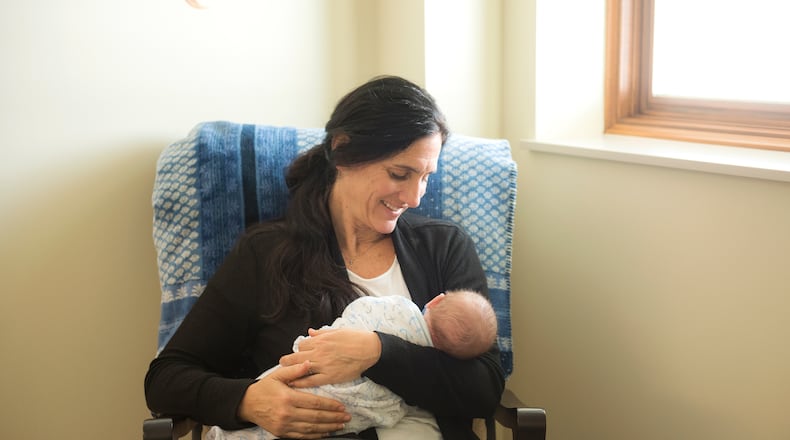“Nobody would enjoy it, but babies tolerate it very well,” said clinical director Lisa Jasin. “Babies can still breastfeed or bottle feed, but sometimes they can’t take enough in because they’re too tired. That lack of coordination, secondary to withdrawal, keeps them from being able to eat, and babies recover better if they grow.”
Neonatal abstinence syndrome, or neonatal opioid withdrawal syndrome, refers to the “constellation of withdrawal symptoms” from substances they were exposed to in utero, Jasin said. Being able to feed babies with NG tubes in the a non-clinical environment is a boon for recovering infants. Babies eat on their own time, as opposed to being fed on a NICU schedule.
“Feeding and getting enough nutrition are obviously important to the healing and growth of our babies who face withdrawal from substance exposure,” said nursing manager Rebekah Baumer. “In our homelike environment, babies tend to eat better than in other clinical settings. It’s quiet here, and we can feed on-demand.”
Nurses hope that being able to provide this service may shorten the hospital stay for infants and mothers.
“One thing this may serve to do is increase the number of babies able to come to us earlier,” Jasin said. “Babies don’t have to stay at the hospital because they have an NG tube in place.”
The staff to baby ratio is 1:1, and the average stay for mom and baby is about 50 days. Brigid’s Path serves between 30 and 40 babies a year, a number that keeps going up.
“Our low baby-to-staff ratios mean nurses can spend more time feeding, but we do still have some babies who need the supplemental nutrition an NG tube can provide, and we’re glad to be able to offer that to the families who need it,” Baumer said.
As Brigid’s Path is able to accept more infants, staff have seen a shift in what substances infants are affected by: there are fewer instances of opiates, but an increase in methamphetamines and prescription drugs.
“When you look around, when you start talking to people and digging a little bit, most people know someone who has been affected by substance abuse, and many know someone who has died from it,” Jasin said. “Things come into vogue, they wane, but if we continued to look, we’d continue to see it’s still a problem. It may have just changed a little bit.”
About the Author

